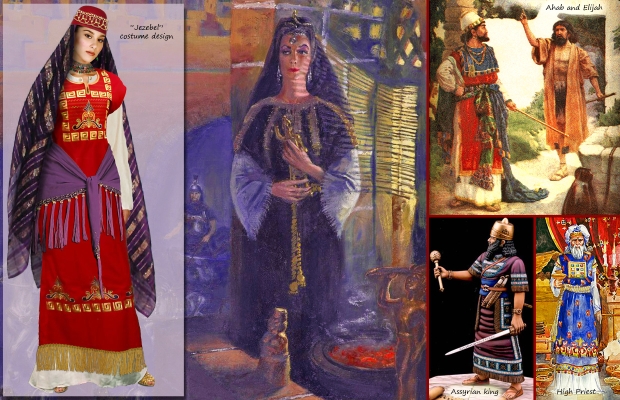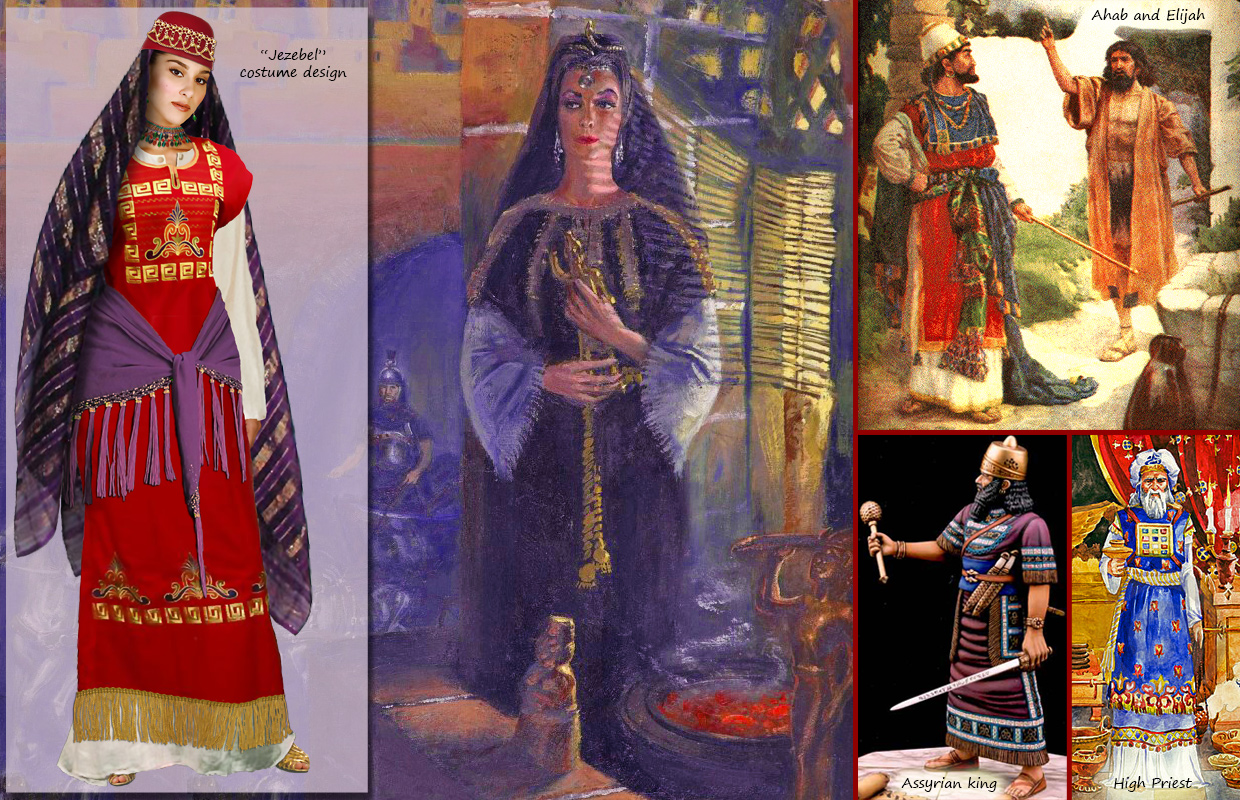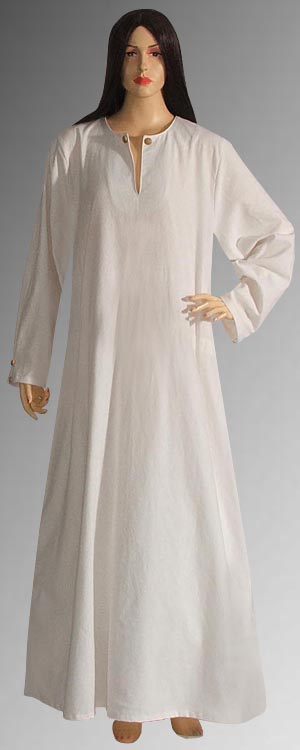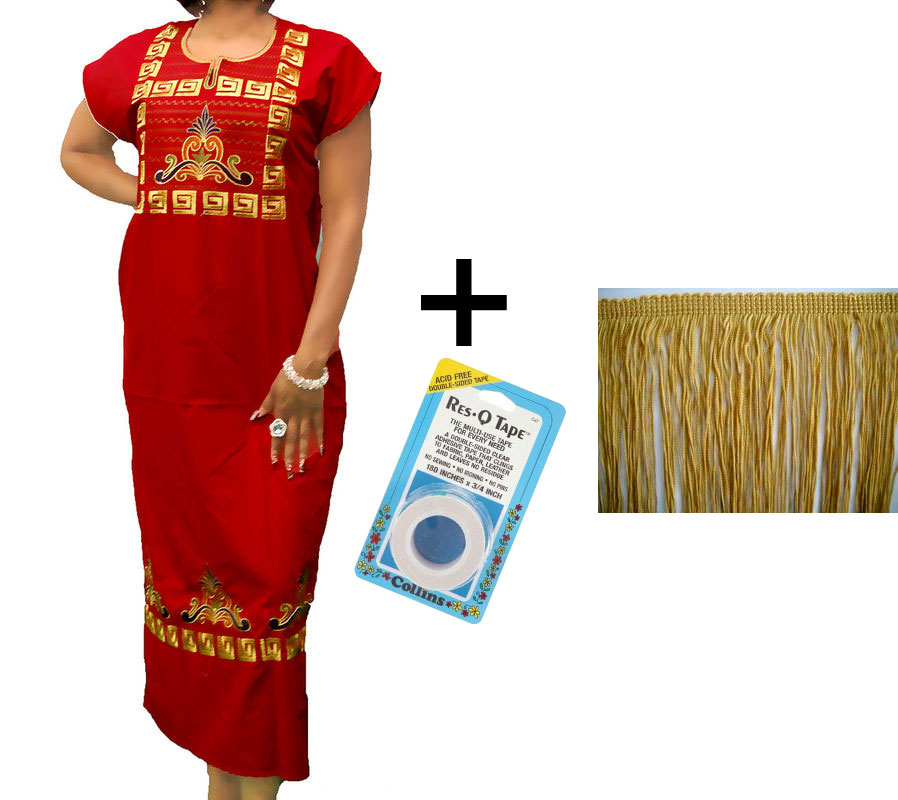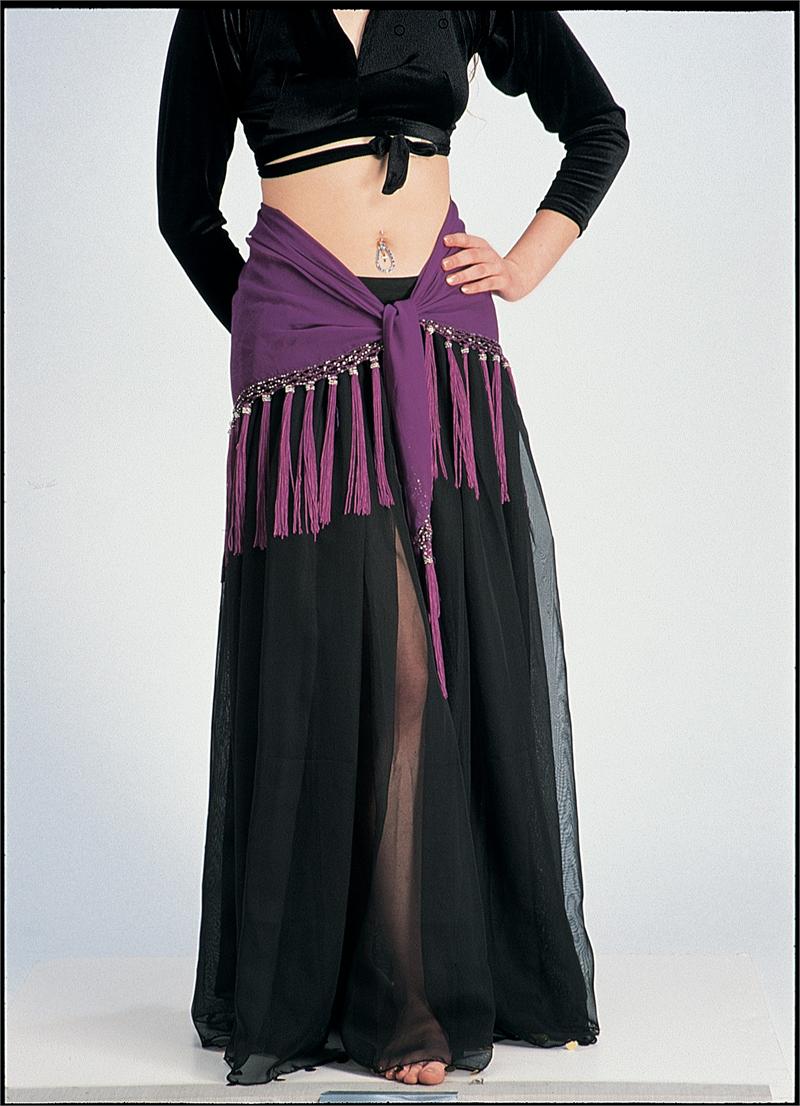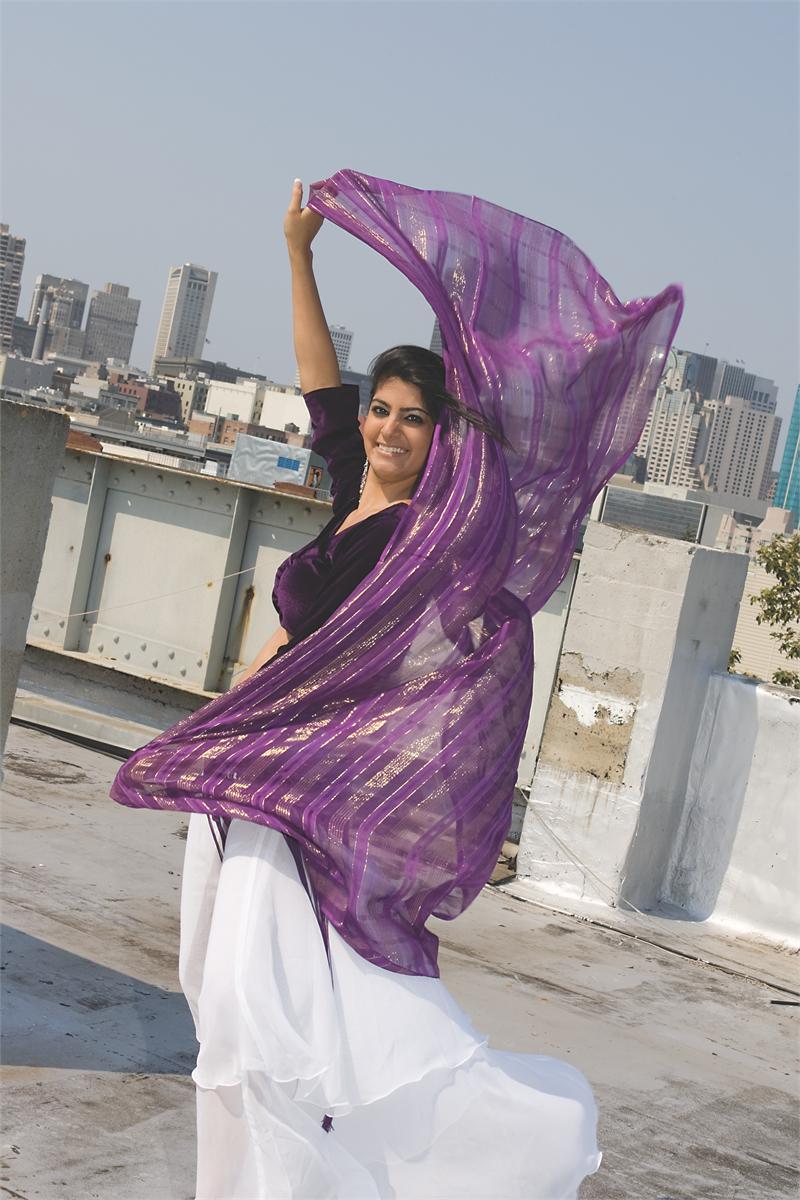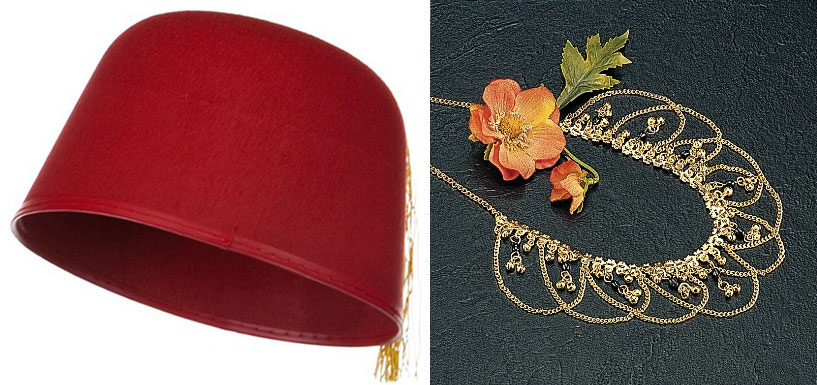The pop culture image of Jezebel bears almost no resemblance to the woman who was queen of Israel in the 9th century BCE. There is nothing remotely sexy about Jezebel in the Bible; she’s just mean. By the same token, the biblical account was written by people who utterly loathed Jezebel and everything she stood for (Baal, Astarte, foreigners, uppity women), so it’s not exactly a balanced perspective. Can the real Queen Jezebel be recovered?
Probably not. It has been three thousand years, after all. What we can do—since this is a costume project—is think about what Jezebel might have worn. We know that she was a princess of Phoenicia by birth; we know that her marriage to King Ahab put her at the center of Israel’s wealthiest dynasty; we think it’s possible that she served as a priestess of Astarte; and we have a pretty good idea of what kings, queens, and priests in that part of the world were wearing in the 9th century BCE. Our costume is heavy on red and purple, since the Phoenicians were famous for their purple dye (which actually included a range of hues from bright crimson to blackish magenta). The pieces we suggest, from left to right:
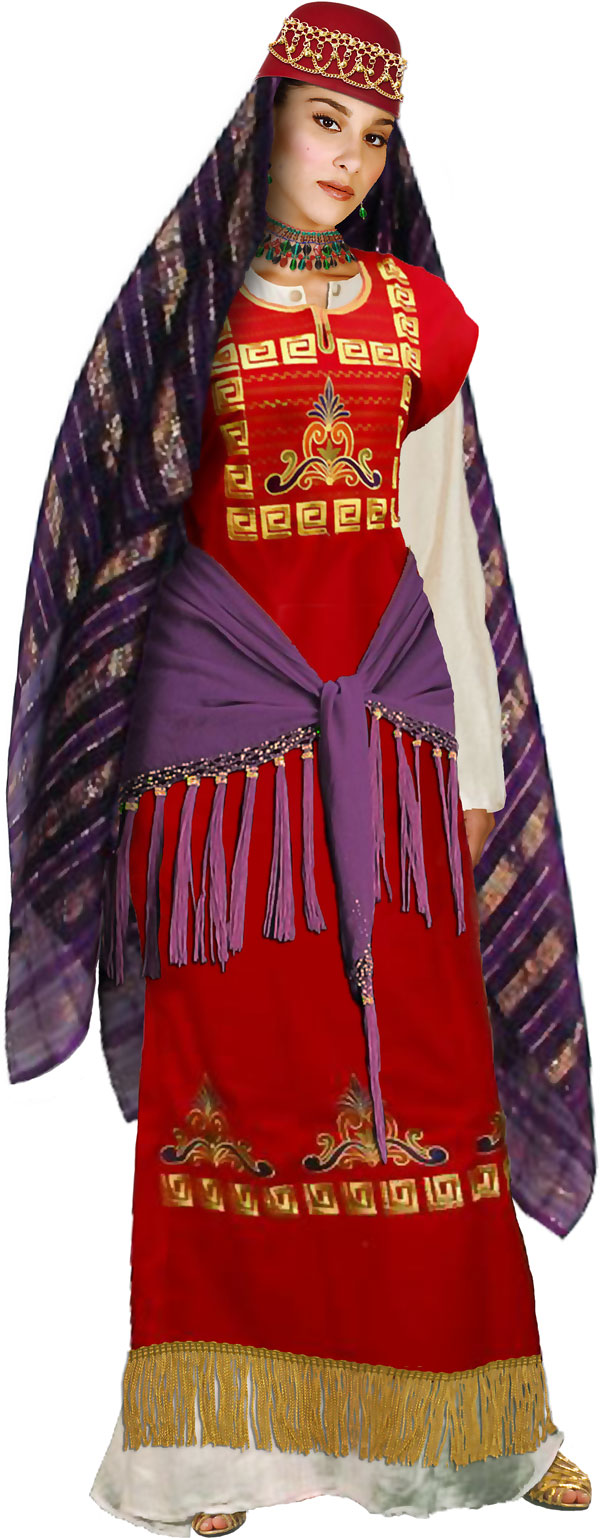 1. Full-length white chemise. Jezebel would have worn a fine-quality linen tunic as her underdress. That this is a Ren Faire costume item shouldn’t surprise, since the medieval chemise is a direct descendant of the ancient Near Eastern sleeved tunic.
1. Full-length white chemise. Jezebel would have worn a fine-quality linen tunic as her underdress. That this is a Ren Faire costume item shouldn’t surprise, since the medieval chemise is a direct descendant of the ancient Near Eastern sleeved tunic.
2. Red embroidered galabeya plus gold fringe. Our galabeya originally came from eBay; there is an ever-changing selection of patterns and styles offered by various sellers. (One store that often has similar galabeyas is EgyptMart.) The only thing you’ll need to add is fringe. Fringes were extremely important in Jezebel’s day; all VIPs had elaborate fringes on their garments, and in fact fringes became items of ritual significance in Judaism. Get two yards of gold fringe (you’ll have some left over) and attach it to the hem of the dress with double-sided tape.
3. Purple fringed hip scarf. More fringe, and a great shot of purple.
4. Purple lurex veil. More purple, plus gold threads. Drape over your head and secure with the crown (next).
5. Red fez adorned with a gold necklace. It was the Age of Coneheads: everybody who was anybody was wearing some kind of big domed or pointed thing on their heads. A fez is a reasonable approximation of the female headdress of the day. Remove the tassel and wrap the necklace around the fez to dress it up.
6. Glass bead choker and earring set. Another thing the Phoenicians were famous for was their glass, including beads. They loved Egyptian jewelry designs, which they executed in glass and ceramic rather than precious stones. Phoenician women are also described as wearing dog-collar chokers and multiple strands of beads.
Additional jewelry: The Phoenicians belonged to the “more is more” school of personal adornment. Gold and glass beads were their specialty, and they liked to wear as many of them as humanly possible. Pile on any bracelets you have; wear multiple earrings if you have the piercings (the Phoenicians pierced their ear rims as well as lobes); and wear a ring on every finger.
Makeup: When Jezebel knew that she was about to be killed by rebels, she “painted her eyes and adorned her head and looked out the window.” It seems obvious that she was going to meet her death arrayed as a queen, and possibly as a priestess of Astarte (the “woman at the window” motif is thought to represent the goddess). The eye paint was probably the kohl that was used in the Near East and Egypt to outline the eyes. Get some eyeliner and lay it on thick, top and bottom.
Shoes: Gold sandals would be ideal, but any kind of simple flat sandal will work.

